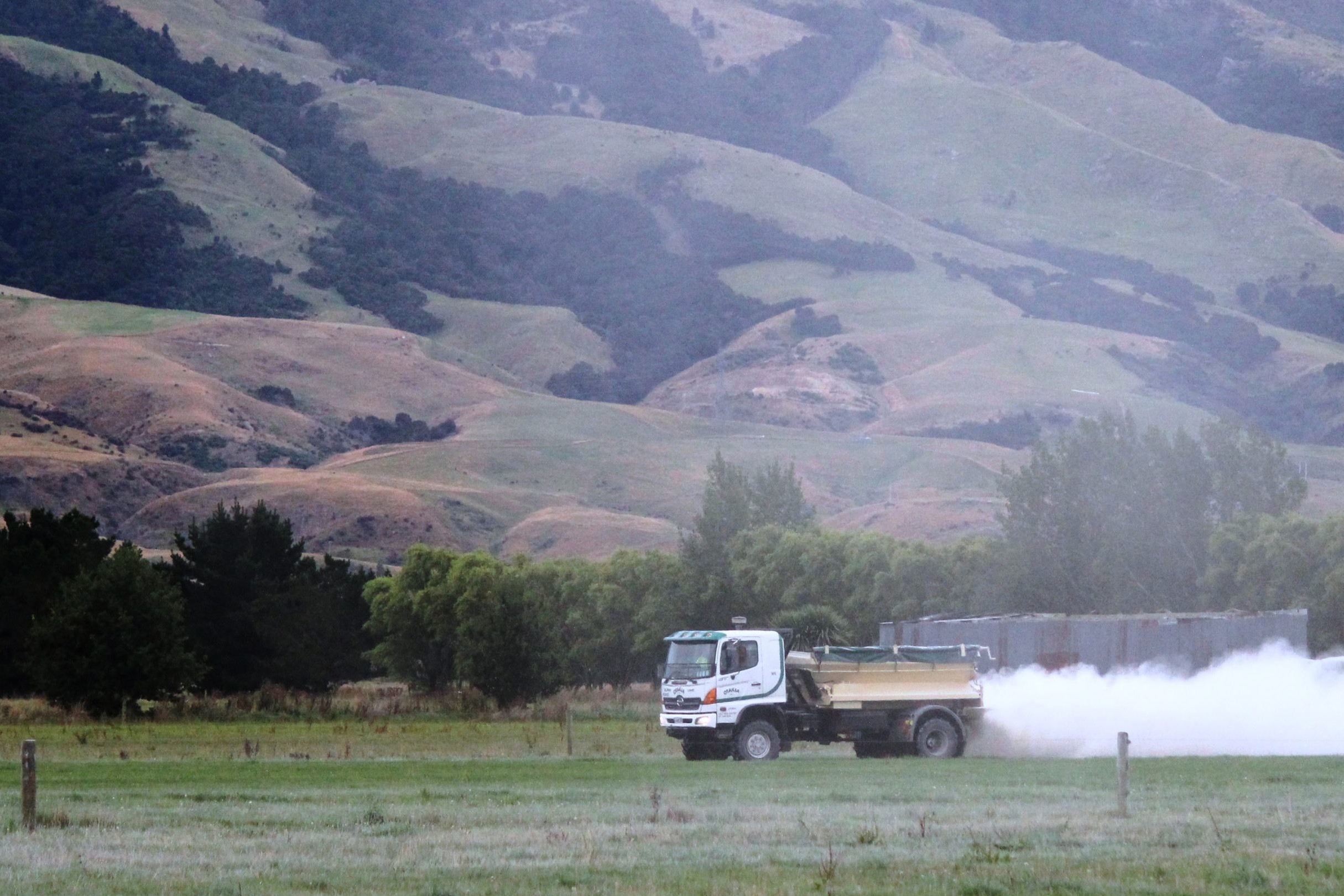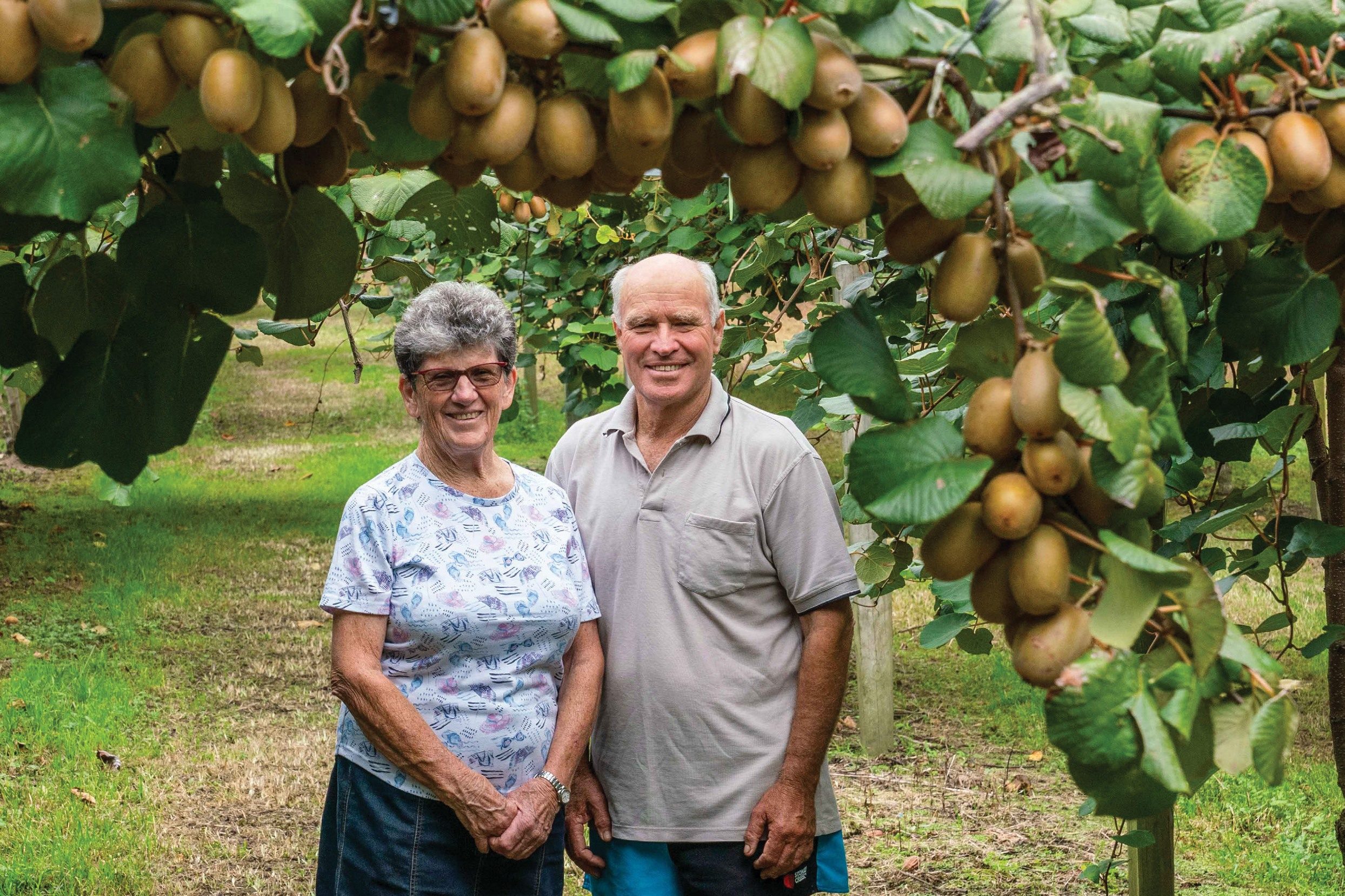Tirau-based dairy farmer Shane Goldsmith sees a reduction in herd numbers leading to a more stable and better environmental future. Words by: Elaine Fisher. Photos by: Emma McCarthy.
Shane Goldsmith is a “glass half full” farmer when it comes to his attitude to proposed reductions in both dairy cow numbers and hectares in dairying.
“There are a few different factors to stabilisation of payouts and an oversupply of milk, but I think no more conversions going into dairying and a reduction in herd numbers may be a positive contribution to its stability in the future.” says Shane who milks 700 cows on 240 ha (214ha effective) near Tirau. The Independent Climate Change Commission’s (ICCC) draft carbon budgets and advice to the Government includes a suggested 15% reduction in the numbers of dairy cows, beef cows and sheep by 2030 while maintaining current production levels. It is also envisaged that there will be direct land use change from dairy farming to horticulture of around 2000 hectares per year from 2025 onward.
“Some farmers are not happy about the proposed cutbacks but if you look back say 10 years, every time there was talk of a $6 to $7 payout many farmers increased herd numbers and bought in more feed which led to an oversupply and the risk of a drop in payout.
“A far more positive way to look at the environmental proposals is to consider that it will bring a more stable payout long term,” says Shane who, for the past three seasons, has supplied Miraka.
The Taupo company’s principles, including sustainable farming practices which have a minimal impact on the environment, are among the reasons Shane and wife Sarah became Miraka suppliers not long after buying the Tirau farm.
“I like the direction Miraka is taking and its personal approach to suppliers. You are not just a number. They know us by name and are always welcoming.”
From shift work to farming
Unlike many in the industry, Shane’s journey into dairy farming didn’t follow the sharemilking route.
He left home at 18 and worked for companies, including Waikato Dairy Co and Tatua; worked as an AB technician, did relief milkings on days off and even invested an ACC payout money into property to get ahead, always with the aim of farm ownership.
“Although I didn’t like shift work, which I was doing at the factories, I knew it was a road that would lead me to be my own boss. I always had a passion for farming and I was focused with that goal in mind.
“I returned to lease the family farm, which was 28 hectares at Te Poi; and had enough investments to sell to purchase the neighbouring blocks over a few years. As time went on, I married Sarah and had four kids and continued to build and sell commercial building investments to make great gains which led us to our current farm.”
Four years ago, Shane and Sarah sold the Te Poi farm and bought their current property at Tirau. “We were milking 240 cows and could make ends meet but wouldn’t be where we are today if we had continued with that herd size.”
From 240 cows, their herd has increased to 700 F12 Friesians. “It was a big jump and meant we had to buy in a lot of cows.”
There was, in Shane’s words; “room for improvement” on the Tirau farm. “To bring the farm up to our standards it has had its challenges. With old pasture, rundown fences, collapsing effluent pond and new stock purchases we had so many improvements that were required it was overwhelming.”
The farm has three permanent staff, who work eight days on and two off on a roster which ensures jobs, including milking on the 70-bale rotary, are shared around. “Someone gets the cows in and then helps with the last half of milking. No one is milking every day. They are in and out of the shed, doing something different most days. “No one does the same job all the time, they each milk, drive the tractor or are on the pad or other farm jobs. It’s very important to break up the work as spending every day milking twice a day can kill the job, especially for young people.”
Selling Fonterra shares enabled the Goldsmiths to buy a 50-hectare run-off near Matamata which they are now selling as the opportunity to purchase 50 hectares of a Tirau neighbouring property presented itself. Now all the young stock will remain on the home farm. “We are aiming to become a self-sufficient unit for replacement stock to reduce the risk of diseases like Mycoplasma Bovis and we will not milk any more than 700 cows.”
Maize supplements are also grown onfarm, on blocks irrigated with effluent from the dairy shed and the feed pad.Gradually Shane has made the change to autumn calving, maintaining production levels during the transition. By March this year, the farm was well into calving. “It is about lifestyle and the environment. I think autumn calving is more in tune with the seasons and growth rates of pasture.
“Our cows start to button off production in spring so as they come down to 1.9, the demand for grass is not as great. Coming into summer when grass growth slows, they are drying off.
“The contour of the farm is quite steep to rolling and the Tirau ash soils don’t hold water well, so we do not strip feed, which takes pressure off the paddocks and is easier on the environment. The springer mob and dry cows follow up to top the paddocks, keeping costs down.”
One of Shane’s first purchases when he bought the farm was a Tow and Fert sprayer. “We do not use a lot of nitrogen and have experimented with liquid seaweed fertiliser which has 8% N and traditional fertiliser with 20% N. I’m going back to the seaweed because I didn’t see a significant improvement with the other fert.”
Keeping nitrogen levels low has always been part of Shane’s farming practices. “We are probably using around two-thirds of what the new limits are now, so meeting them won’t be an issue for us.”
In step with Miraka’s environmental policies
In fact, all of Shane’s management techniques are in line with Miraka’s sustainability and environmental policies.
“We are very much onboard with Miraka’s farm environmental plans which we are working through with Warren Landles (Miraka’s farm sustainability manager). He is good at communicating the policies and the benefits of the environmental plan, making it easier to implement.” Although payout incentives help, Shane says it’s also that Te Ara Miraka, Mirakas’ Farming Excellence Programme, is making a positive difference to farming and the environment. Effluent is a crucial part of Shane’s pasture renewal plan. “It’s a huge asset if used right. On my previous farm with old effluent systems, I thought it was a pain in the arse but with the right use at the right time and in the right places it’s an asset. I’d find it hard to farm without it now as some paddocks struggle even with new grass. Adding effluent turns that around.” Shane has plans to pipe effluent, at a cost of around $2000, to improve production on an under-performing paddock, saying it will be cheaper than applying other forms of fertiliser. Effluent is applied via pods and a travelling irrigator. “We have two pumps to handle the effluent, including from the feed pad. In winter we do not need to irrigate as often but if we get a dry spell we can catch up with irrigation. There are timers on the pods so they go for an hour on and an hour off to reduce run-off. That allows a 5ml application, an hour to dry off, followed by another application, so it can be absorbed in the areas where we want it. The timers cost about $200 each so it’s a cheap way to control application.”

Proactive conservation and environmental work has begun on the farm, including repairing and moving fences along the Waihou River which flows through the property, and planting out natives in wetlands in the near future.
Shane would prefer to plant natives on the few hectares of rougher land. “However, as things stand at the moment, if I want to become anything close to carbon neutral, I’ll have to plant pines to get carbon credits. I’ve been holding off because there is discussion with the government about natives qualifying for credits as well as promoting biodiversity.”
While Shane is committed to Miraka and focused on meeting the requirements of Te Ara Miraka and incentives this season, he admits the amount of administration required as part of achieving them can feel daunting. “I would expect most farmers to be just as daunted as me. I have employed one of the manager’s wives to help do the Te Ara Miraka admin for me. She has taken a huge amount of pressure off and I truly believe that in time she would have a fulltime job running these systems for other farms too.”
Shane and Sarah’s family; Aiden (16), Madison (12), Sasha (10), Tahlia (8) and Johnny (4), together with their staff, enjoy the farming lifestyle and the opportunities dairy farming brings.
“Doing our bit to be guardians of the land is something that we strive for and are proud of.”






